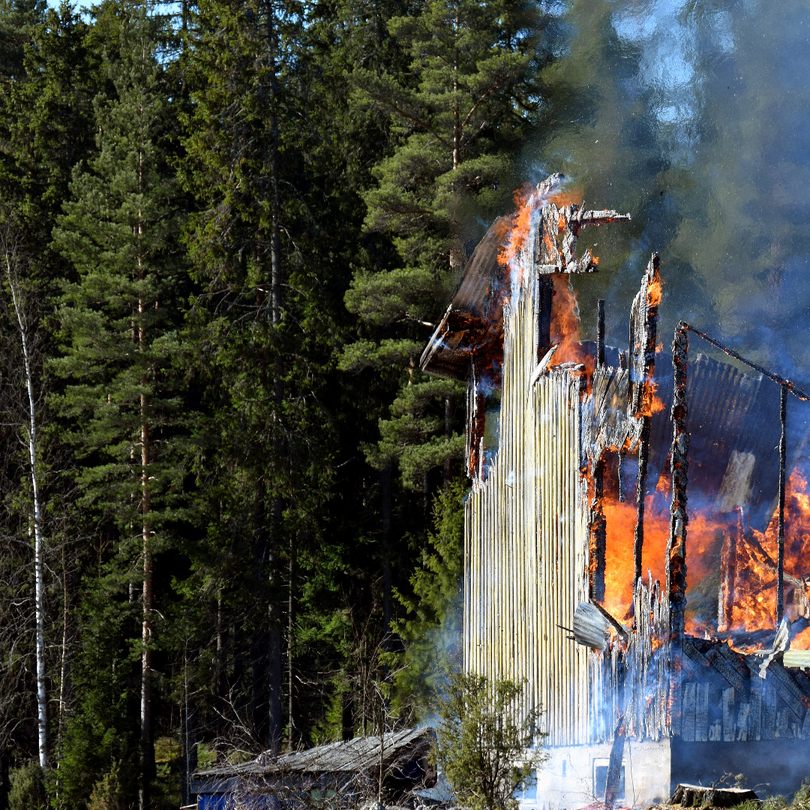
Finding homeowners insurance in fire-prone areas can be tricky—and it’s getting trickier. Some insurers are canceling policies in fire-prone areas of the West Coast or simply not renewing them. Homeowners insurance is getting harder to find, but you don’t want to be caught without it and on the hook for hundreds of thousands in repair, rebuild, and replacement costs.
There are a few options for homeowners who can’t get use a typical top-tier home insurance provider due to their region, and the This Old House Reviews Team has rounded up the options available to you when standard insurance isn’t accessible. Surplus line carriers are one choice, and homes with a value of over $1 million may be eligible for coverage under AIG or Chubb. As a last resort, homeowners can turn to their state’s insurance safety net.
Unfortunately, the options are few and generally more expensive than traditional homeowners insurance policies. But to protect your largest investment, it can be worth it.
Does Homeowners Insurance Cover Wildfire Damage?
Typically, home insurance companies cover wildfire damage. Most home insurance companies will help cover the cost to repair or rebuild your home, the cost to replace your personal property, and expenses for temporarily living outside your home if it is destroyed by a fire from arson, electrical issues, or a wildfire.
If you have a homeowners insurance policy in a fire-prone area, it will typically cover the following:
- Dwelling: Helps cover the cost of repairs and reconstruction. The limit should equate to how much it would cost to rebuild your home at current labor and construction costs. Keep in mind that after disasters, these costs go up, so the limit may not be high enough. You can help guard against this with a guaranteed replacement cost endorsement, which covers the entire reconstruction cost, or an extended replacement cost endorsement, which extends your coverage by an extra 25-50% of your dwelling coverage limit. You’ll want to factor in the cost of any improvements you’ve made to your home.
- Other structures: Helps cover the cost of repairing or rebuilding detached structures like garages and sheds, up to 10% of the dwelling coverage.
- Personal property: Helps cover the cost of replacing personal belongings like clothes, jewelry, appliances, and furniture. This usually covers up to 50% of the dwelling coverage limit. You can prepare for this by taking an inventory of your belongings and recording it on video.
- Loss of use/additional living expenses: Helps cover the costs of living outside of your home, like fuel, lodging, and dining, due to a covered loss.
Standard home insurance policies aren’t always available to homeowners living in fire-prone areas due to the high degree of risk. Luckily, there are some alternatives.
Why Is It Hard to Get Homeowners Insurance in Fire-Prone Areas?
Record-breaking wildfires in recent years have inspired homeowners insurance companies to reconsider the risks of insuring homes in fire-prone areas. Many traditional carriers refuse to insure properties in these areas, and others have stopped renewing policies. Insurers don’t want the liability, and dry seasons are getting longer while wet seasons are getting shorter. The Institute of Insurance Information notes that wildfires accounted for $18 billion in insured losses in 2018, compared to $15 billion the previous year.
According to a 2019 Wildfire Risk Analysis by Verisk, 4.5 million American homes were identified at “high” or “extreme” risk of wildfire. Data from the National Interagency Fire Center shows that there were 41,051 wildfires from January 1 to September 8, 2020—compared to 35,386 wildfires in that same period in 2019.
How to Get Homeowners Insurance in Fire-Prone Areas
There are several ways to get your home insured in a fire-prone area if standard homeowners insurance isn’t an option.
Your state’s FAIR plan
The majority of states provide FAIR, or Fair Access to Insurance Requirements, Plans as a last resort. In California, the FAIR Plan covers up to approximately $1.5 million in dwelling and personal property coverage.
Unfortunately, FAIR Plans don’t cover other perils like water damage, theft, or vandalism. Medical payments and personal liability are generally excluded from coverage. Homeowners can supplement their coverage by purchasing a Difference in Conditions policy to make sure there are no gaps in protections.
FAIR Plans are generally expensive and can cost double what a typical homeowners insurance policy costs. However, other options might be even more expensive.
Premier carriers
Premier insurance carriers like AIG and Chubb have home insurance plans designed to handle wildfire damage, including private firefighter services. Unfortunately, this type of homeowners insurance is generally only available to homes that are valued at more than $1 million.
Surplus line carriers
Surplus line carriers provide insurance for homes that typical home insurance companies refuse to insure due to the high degree of financial risk. They are able to take on the risks because they are not required to follow state regulations. Surplus line carrier plans tend to be more expensive than standard homeowners insurance policies.
How to Protect Homes in Fire-Prone Areas
Wildfires can be completely devastating. However, there are a few steps you can take to try to mitigate the damage if you live in a fire-prone area:
- Build your house more than 15 feet away from neighboring homes
- Get noncombustible roofing and siding
- Confirm your home has six-inch ground-to-siding distance
- Install nonflammable gates
- Keep gutters clean
- Remove debris from your roof
- Prune branches
- Get rid of brush, shrubs, and dead vegetations underneath your home
To read the full article, click here.